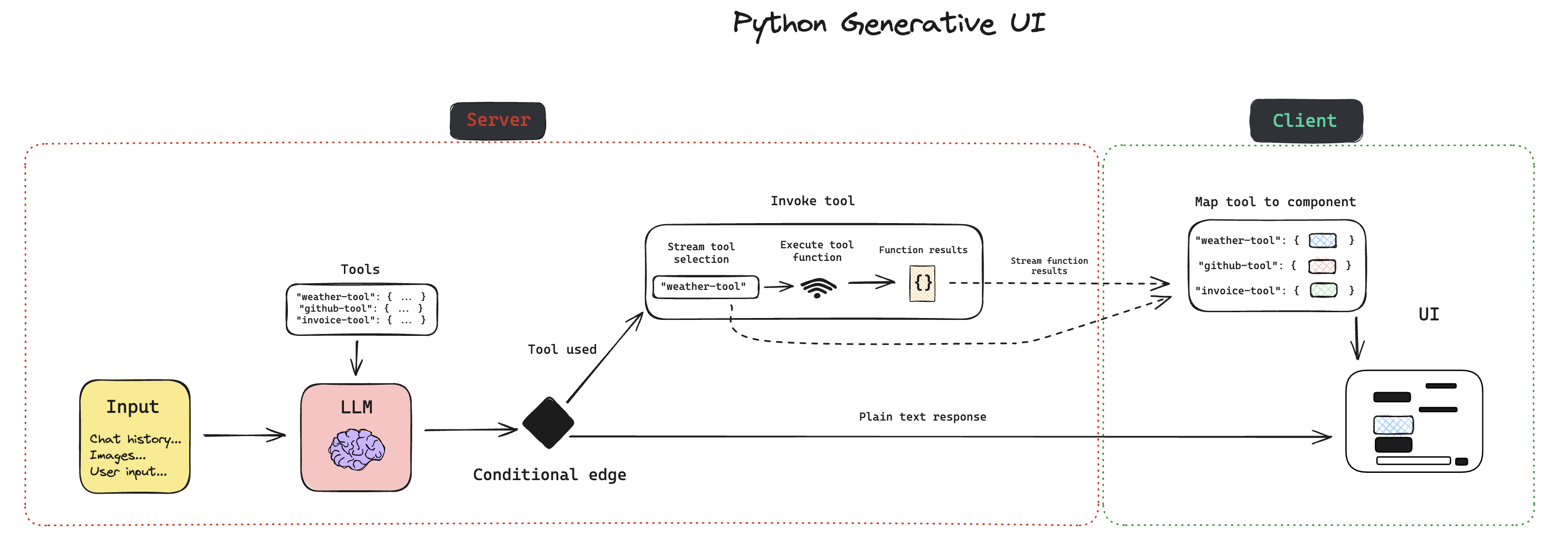This application aims to provide a template for building generative UI applications with LangChain Python. It comes pre-built with a few UI features which you can use to play about with gen ui. The UI components are built using Shadcn.
First, clone the repository and install dependencies:
git clone https://github.com/bracesprou/gen-ui-python.git
cd gen-ui-pythonInstall dependencies in the frontend and backend directories:
cd ./frontend
yarn installcd ../backend
poetry installNext, if you plan on using the existing pre-built UI components, you'll need to set a few environment variables:
Copy the .env.example file to .env inside the backend directory.
LangSmith keys are optional, but highly recommended if you plan on developing this application further.
The OPENAI_API_KEY is required. Get your OpenAI API key from the OpenAI dashboard.
Sign up/in to LangSmith and get your API key.
Create a new GitHub PAT (Personal Access Token) with the repo scope.
Create a free Geocode account.
# ------------------LangSmith tracing------------------
LANGCHAIN_API_KEY=...
LANGCHAIN_CALLBACKS_BACKGROUND=true
LANGCHAIN_TRACING_V2=true
# -----------------------------------------------------
GITHUB_TOKEN=...
OPENAI_API_KEY=...
GEOCODE_API_KEY=...cd ./frontend
yarn devThis will start a development server on http://localhost:3000.
Then, in a new terminal window:
cd ../backend
poetry run startIf you're interested in ways to take this demo application further, I'd consider the following:
Generating entire React components to be rendered, instead of relying on pre-built components. OR: Using the LLM to build custom components using a UI library like Shadcn. Multi-tool and component usage. Update the LangGraph agent to call multiple tools, and appending multiple different UI components to the client rendered UI. Generative UI outside of the chatbot window. Have the UI dynamically render in different areas on the screen. E.g a dashboard, where the components are dynamically rendered based on the LLMs output.
